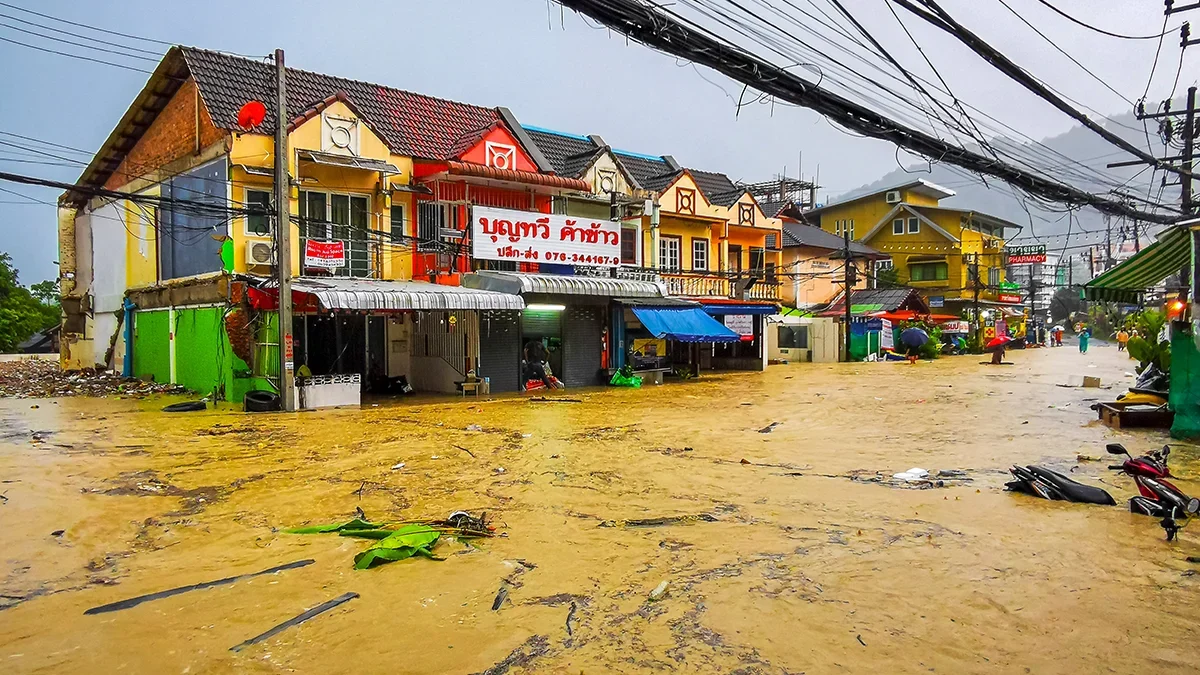(Re)in Summary
• Asia led global growth in renewable energy capacity in 2024, with insurers seeing a rise in premiums, including over US$200m in new renewable premiums from Chinese insurers.
• However, new technologies and natural catastrophe risks are increasing underwriting complexity and require more technical and data-driven approaches.
• (Re)insurers are adopting proactive risk management, closer client collaboration, and engineering solutions to address risk gaps in renewable energy projects.
• Interest in parametric insurance is growing to address protection gaps and project financing needs
Asia’s accelerating energy transition is driving rapid growth in renewable power capacity and opening new markets for (re)insurers, however, more competition, new technologies, and natural catastrophe risks are forcing the industry to rethink underwriting models and develop innovative risk management approaches.
Data from the International Renewable Energy Agency show that 2.493m megawatts of renewable energy capacity — the maximum potential amount of electricity that can be generated by renewable sources — were installed in Asia in 2024, almost three times as much as in Europe, which ranked second.
A September report from Insure Our Future noted that three major Chinese insurers—PICC, Ping An, and Yingda Taihe—dominated growth in primary renewable premiums, securing over US$200m in new premiums between 2023 and 2024. Insurers across Asia recorded overall premium growth of 18% between 2023 and 2024, the same report said.
But the transition to renewables is also introducing increased complexity into underwriting portfolios.
In its Renewable Energy Market Review 2025, WTW said Asia was the main driver of the 140% global increase in renewable capacity over the past decade. Amid this growth, underwriters in the region have remained vigilant.
“In general, while new market entrants have increased overall capacity and enhanced competitiveness in the insurance sector, insurers remain highly technical and cautious,” Sam Liu, Regional Renewable Energy Leader, Asia, Willis Natural Resources said in the report. “Capacity remains constrained by factors such as natural catastrophe exposures and the accumulation of insured assets within specific regions, which continue to influence underwriting appetite and terms.”
This view is widely held across the market, especially as emerging technologies such as Battery Energy Storage Systems (BESS), hydrogen, floating photovoltaics (FPV), and larger wind turbine models have limited historical data alongside heightened exposure to natural catastrophe risks.
“The introduction of new technologies, the impacts of extreme weather events, and the increasing scale and complexity of projects often result in gaps in risk knowledge and limitations in available underwriting data, which prove challenging to underwriters,” Jimmy Lim, Head Engineering APAC at Swiss Re, tells (Re)in Asia.
Technological and environmental risk gaps are slowing progress in the renewable energy transition and contributing to higher insurance premiums, FM said in an April survey.
“Providers are doing the best they can with the information they have, but they need more insight into the technology they are buying and the environmental factors that threaten it,” said Doug Patterson, Senior Vice President, Forest Products and FM Renewable Energy.
“The growing penetration of renewables introduces new and more variable risk dynamics,” a spokesperson at FM told (Re)in Asia. “As the energy transition accelerates, the industry’s ability to keep pace with these evolving exposures will be key to underwriting them effectively.”

Jimmy Lim
Head Engineering APAC at Swiss ReSolving the conundrum
The lack of historical data that underwriters can access is one of the more salient issues. Technologies like carbon capture storage and new-energy alternative green fuels are still relatively new as are the supply chains surrounding them, says Vipul Shetty, Head of Energy Transition Solutions at Howden.
For instance, risks in the industrial-scale capture/production and transportation of carbon dioxide and alternative fuels like ammonia or hydrogen need to be studied and assessments need to be made of how these new technologies perform at operating thresholds in the long term.
“This is a big conundrum specifically in Asia, because it is not something the insurers are very comfortable with insuring, particularly because the value chain is so new, and technologies in this space are also very new,” he says.
Swiss Re’s Lim points out that renewable energy risks cannot be commoditised or standardised. “Rather, underwriting decisions need to be based on technical insight, risk knowledge and a clear understanding of risk exposure, loss experience and accumulation potential.”
Natural catastrophes also play a key role.
A study by underwriter GCube Insurance evaluating US solar claims found that hail damage accounted for 54% of total losses and a whopping US$342 million in claims payouts, despite occupying only 1.4% of claims incidents.
“The same thing is going to happen here in this region,” says Ben Qin, Head of Asia Pacific at Descartes Underwriting. “The underlying risk profile is escalating because most of these regions are climate-affected.”

Vipul Shetty
Head of Energy Transition Solutions at Howden“Move to the front of the bus”
To deal with these changing risks, (re)insurers need to “move to the front of the bus”, says Shetty.
“What I would encourage insurers to do is to move to the front of these negotiations and start becoming more proactive in understanding risk at an early stage or an earlier stage than they are currently used to.”
This is a viewpoint shared at FM, which says (re)insurers can play an even more proactive role by collaborating and shaping codes and standards that govern the design, manufacturing and installation of green energy projects.
“By advocating for robust, resilient-focused standards, insurers can help raise the overall quality and reliability of renewable assets,” an FM spokesperson said in an email. “As confidence in these standards grows, so will insurers’ comfort with the associated risks, ultimately enabling the industry to offer more competitive terms, stable pricing and broader support for the continued expansion of green energy.”
(Re)insurers also need to close the knowledge gap.
“New technology risks from continuous technology advancements tend to outpace the availability of historical loss data,” says Swiss Re’s Lim. “Through partnering closely with clients and stakeholders, underwriting can keep up with technology development.”
Some insurers are already taking heed.
The industry is becoming more analytical about upstream losses and is distinguishing between volatility caused by isolated events and structural shifts in exposure, Lim says. “We see the industry exercising technical underwriting discipline.”
Working with clients to “engineer out” risks at various phases of a project can help reduce risk effectively, accurately price risk and increase underwriting capacity, says Vicky Roberts-Mills, Global Head of Energy Transition at AXA XL.
Underwriters and consultants can advise organisations and renewable energy producers on equipment durability, reducing operational downtime, adds Roberts-Mills. “Spotting risks early on in a project offers the chance to ‘design out’ those risks from resurfacing later on,” she adds.
(Re)insurers need to understand their exposures and focus on risk quality to build a sustainable portfolio, Lim points out. “The same goes for steering portfolios according to levels of technological maturity, claims experience, geographic volatility and accumulation potential.”
“Underwriting must keep pace. This means smart capacity backed by risk knowledge, coordinated placement and prudent management,” he adds.

Vicky Roberts-Mills
Global Head of Energy Transition at AXA XLParametric interest
With the risk matrix changing constantly, (re)insurers are also exploring how alternative risk transfer solutions can work to complement traditional underwriting approaches.
Parametric solutions to handle fluctuations in yield have been mooted since before 2023. But as traditional insurers start to reduce limits in some areas and adjust their risk appetites, interest in parametric solutions has risen, says Descartes’ Qin.
“Most of the traditional (re)insurers on risk to green energy projects more or less have deployed capital or reached accumulation in the market,” he adds.
This has meant greater opportunity for parametric solutions in the market to complement traditional risk transfer solutions, says Qin. Parametric solutions that enable precise risk differentiation tailored to assets can restore the balance between buyers and sellers and attract more capital. “It’s a bit of a win-win,” says Qin.
Beyond plugging protection gaps, yield-based parametric insurance can also help reduce variability risks for renewable energy operators and developers. “Weather variability [has] an immediate impact on their revenue. That’s a second stream of risk profile that we can solve with this,” Qin says.

Haris Michaels
Head of Construction and Renewable Energy MENA & Asia at HDI GlobalThe accessibility of parametric products can also help secure project financing, a key component of the region’s renewable energy transition.
“They enable flexible and transparent coverage structures, which can be particularly valuable for renewable energy projects with unique risk profiles or limited historical data,” says Haris Michaels, Head of Construction and Renewable Energy MENA & Asia at HDI Global.

Ben QIn
Head of Asia Pacific at Descartes UnderwritingInvestors have taken note, with parametric investor-linked securities (ILS) providing additional capacity for growth. Zurich-based Twelve Capital launched a parametric ILS fund in February this year with Descartes Underwriting and Generali’s Global Corporate and Commercial arm.
“There [are] more and more players and we’re just one of the early adopters,” Qin says. “And hopefully, [it] becomes more of a sustainable approach for everyone.”
The near-term energy transition will be complex, even as it ultimately improves the environmental sustainability and resilience of insurer portfolios, FM’s spokesperson said. “Certain legacy risks, such as coal dust or oil fire exposures, may diminish, but new climate-driven exposures are emerging in their place. Insurers are therefore evolving their models, tools, and analytics to understand these shifts more deeply.”














